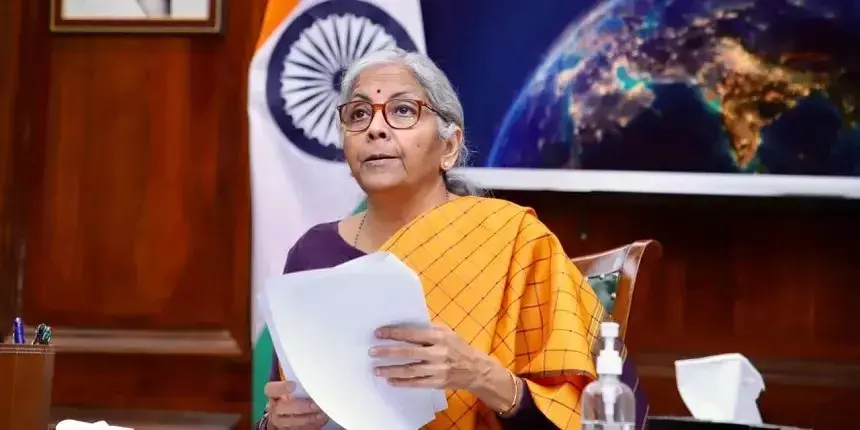Govt May Double Ayushman Bharat Reach, Increase Health Cover to ₹10 Lakh
Imagine having a safety net that catches you when life throws unexpected medical expenses your way. The Indian government is planning a major expansion of its flagship Ayushman Bharat health insurance scheme over the next three years. The exciting development involves potentially including all individuals over 70 years of age in the scheme and increasing the insurance coverage to ₹10 lakh per year. If implemented, this change would offer significant relief to families facing medical expenses, which are a major cause of financial strain. Interim Budget 2024 In the interim Budget for 2024, the government increased the allocation for the Ayushman Bharat Pradhan Mantri Jan Arogya Yojana (AB-PMJAY), which provides health coverage of ₹5 lakh per family per year for secondary and tertiary care hospitalization to 12 crore families. The budget saw an increase in allocation to ₹7,200 crore for AB-PMJAY and an additional ₹646 crore for the Ayushman Bharat Health Infrastructure Mission (PM-ABHIM). NITI Aayog’s 2021 Report: Key Takeaways A report by NITI Aayog in October 2021, titled ‘Health Insurance for India’s Missing Middle,’ highlighted that about 30% of the population lacks health insurance coverage. The report identified this gap as a significant policy issue and suggested the need for a comprehensive, low-cost health insurance product for the “missing middle” group. This group includes self-employed individuals, informal sector workers in rural and urban areas, and those not covered by existing insurance schemes. What is PMJAY (Ayushman Bharat Yojana)? Launched in September 2018, Ayushman Bharat Yojana is one of the world’s largest healthcare schemes, aiming to cover over 500 million Indian citizens, particularly those from economically weaker sections. The scheme offers health insurance with a maximum sum insured of ₹5 lakh per family per year for secondary and tertiary hospitalisation. Beneficiaries can access cashless hospitalisation services at empanelled hospitals across India. Eligibility for PMJAY The scheme covers 100 million families, including 80 million in rural areas and 23.3 million in urban areas, aiming to reach a total of 500 million individuals. Eligible applicants must belong to categories such as SC/ST, Lower Income Group, or Economically Weaker Sections (EWS). Eligibility can be checked using the ‘Am I Eligible’ feature on the official website. PMJAY in Rural and Urban Areas Rural Areas: Includes SC/ST households, beggars, families with no adults aged 16-59, families with a physically challenged member, landless laborers, primitive tribal communities, and more. Urban Areas: Includes washermen, rag pickers, mechanics, domestic help, sanitation workers, construction workers, transport workers, and more. Exclusions from PMJAY The scheme does not cover individuals who: Own motorised vehicles or mechanised farming equipment Have kisan cards with a credit limit of ₹50,000 Are government employees or work in government-managed non-agricultural enterprises Earn above ₹10,000 per month or own substantial assets like refrigerators or landlines Coverage under Ayushman Bharat Yojana AB-PMJAY offers up to ₹5 lakh per family annually for secondary and tertiary hospitalisation care, covering medical services such as: Examinations, consultations, treatments Medications, diagnostics, accommodation Medical implants, food services, post-hospitalisation expenses Exclusions from Coverage The scheme does not cover: Out-Patient Department (OPD) expenses Drug rehabilitation, cosmetic surgeries, fertility treatments Individual diagnostics, organ transplants Checking Eligibility Online To check your eligibility for Ayushman Bharat Yojana: Visit the official Ayushman Bharat Yojana website. Go to the “Am I Eligible” section. Enter your mobile number and captcha code, then click “Generate OTP.” Enter the OTP received on your mobile and click “Verify OTP.” Provide details like name, state, age, family members, and income. Click “Submit” to check your eligibility. Future Prospects The government’s proposed expansion of the Ayushman Bharat scheme could potentially double its reach and significantly increase health coverage, reflecting a commitment to improving healthcare access for millions of Indians. This move aligns with previous recommendations and ongoing efforts to enhance the health insurance infrastructure in the country.


